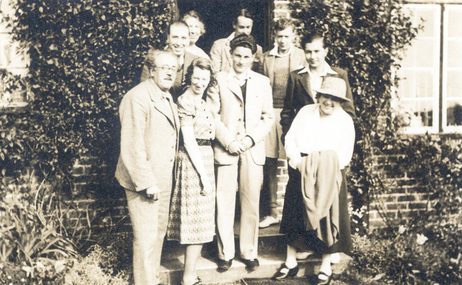Presented by Lucy Walker
Unlike other composers – even twentieth century ones – Britten chose not to write a string of symphonies, neatly organised by number. Instead, he wrote a short, 3-part orchestral piece (Sinfonia da Requiem, 1940), a concerto-like work showcasing the cello (the Cello Symphony, 1964) and a glorious tour de force for orchestra, choir, children’s choir and soloists – his Spring Symphony, composed in 1948-9. Each of these three ‘symphonies’ make you wish Britten had composed more for large orchestral forces, as his imagination seems boundless. The instrumental colours in this work are especially vibrant, and carefully-chosen for each individual movement. The wintery opening features the eerie vibraphone and skeletal strings; the spring is heralded by a glorious fanfare; the darkly sensuous WH Auden setting ‘Out on the lawn I lie in bed’ begins with an evocative pairing of alto flute and bass clarinet; while the rambunctious close throws in the full forces, plus a cow-horn for good measure. Other than the Auden, most of the texts are Elizabethan – taken from various anthologies of Elizabethan verse; but Britten also includes the melody and text from the thirteenth century Sumer is icumen in.
Writing the symphony caused Britten great stress and even triggered a breakdown: he wrote to his publisher in 1949 that he had ‘gone through considerable agony of body and spirit’. Yet the work is one of his freshest, most original and surprising works that works brilliantly well in performance. As a reviewer wrote after hearing the first British performance, ‘I shall never hear it again for the first time and I envy those who come to the Spring Symphony . . . as to something new.’
Watch more

74th Aldeburgh Festival
09 – 25 June 2023
A Song at The Red House: 'Tell me the Truth About Love', by Benjamin Britten
Soprano Elise Caluwaerts performs one of Britten's cabaret songs, with a witty text by WH Auden. Accompanied by Lucy Walker on Britten's Steinway piano…
Work of the Week 24. Violin Concerto
Presented by Roger Wright
